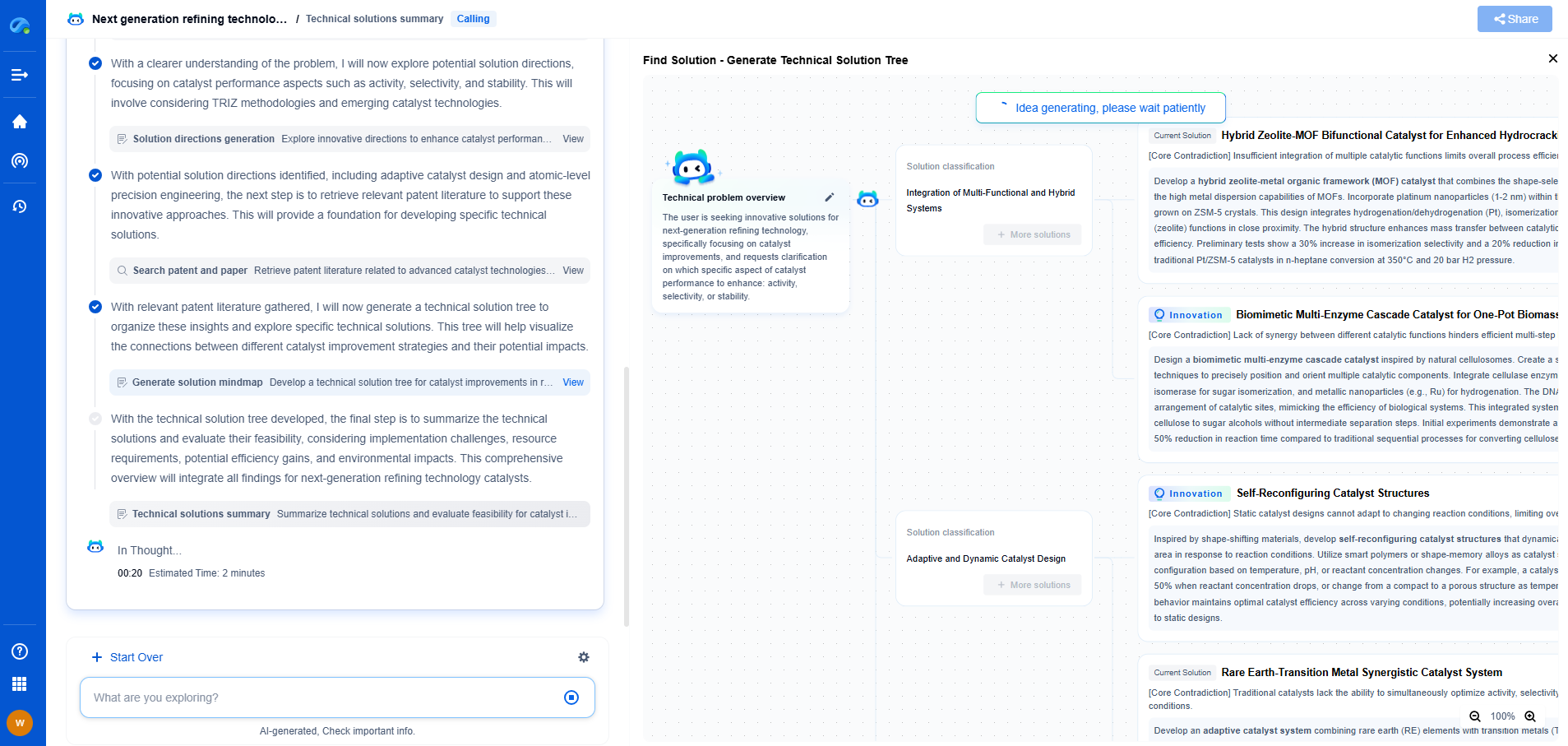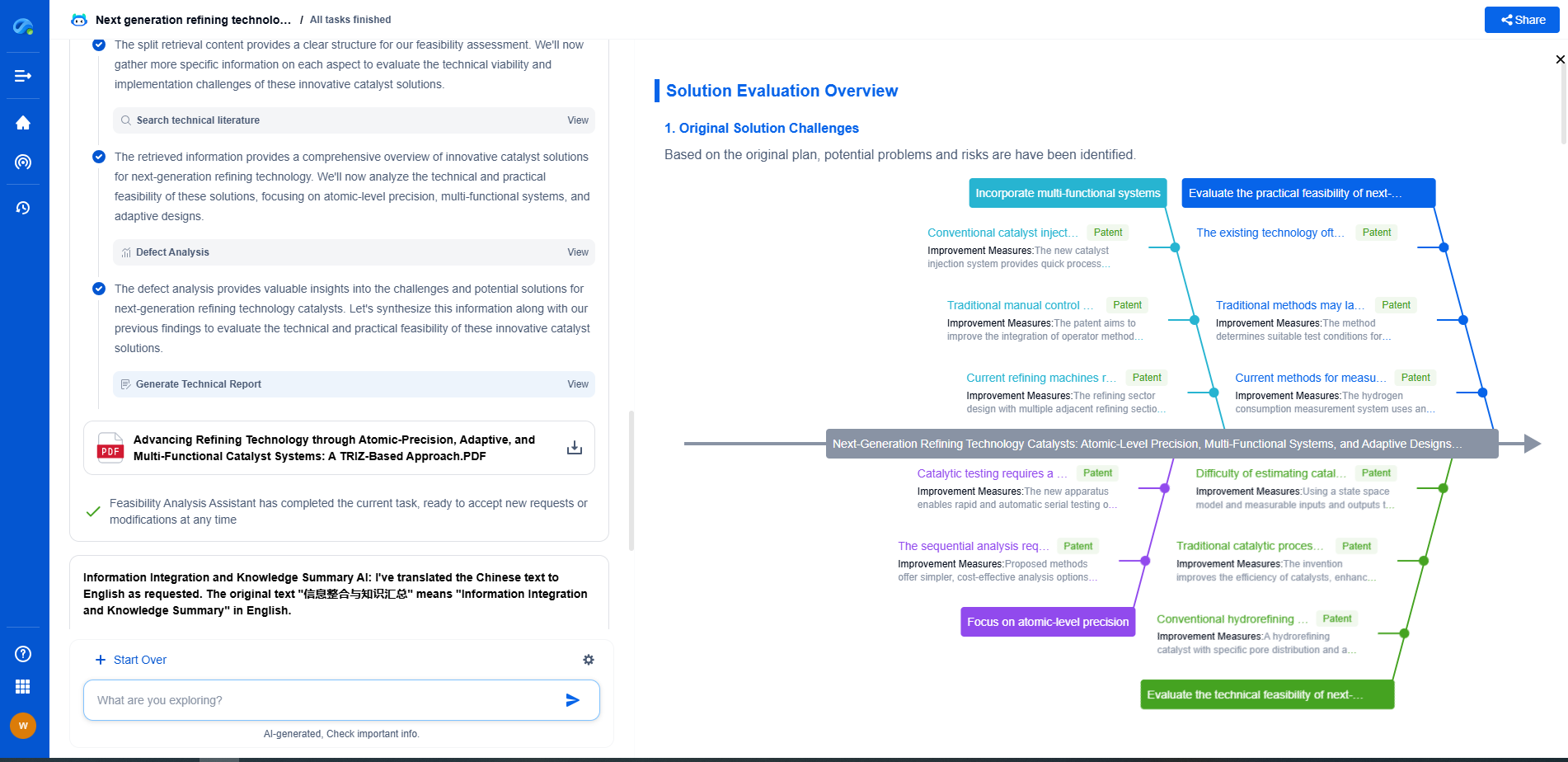Digital Twin vs Real-Time SCADA Monitoring: What’s More Effective for Grid Optimization?
JUN 26, 2025 |
The modern electrical grid is a complex network of interconnected systems that require effective monitoring and optimization to ensure efficiency, reliability, and sustainability. In recent years, two technologies have emerged as frontrunners in grid optimization: Digital Twin technology and Real-Time SCADA (Supervisory Control and Data Acquisition) monitoring. As utilities and grid operators seek to enhance their operations, a crucial question arises: which of these technologies is more effective for grid optimization?
Understanding Digital Twin Technology
Digital Twin technology involves creating a virtual replica of a physical system, allowing operators to simulate, analyze, and predict system behaviors. In the context of grid optimization, a digital twin can replicate the entire electrical network, including generators, transmission lines, substations, and loads. This virtual model continuously receives data from its real-world counterpart, enabling real-time analysis and decision-making.
One of the primary advantages of Digital Twins is their predictive capabilities. By simulating various scenarios, operators can foresee potential issues such as equipment failures, overloads, or inefficiencies. This foresight allows for proactive maintenance and optimization strategies, reducing downtime and costs. Moreover, Digital Twins facilitate the integration of renewable energy sources by simulating their impact on the grid, thus aiding in the transition to a more sustainable energy future.
Exploring Real-Time SCADA Monitoring
SCADA systems have been the backbone of grid monitoring for decades. These systems provide real-time data collection, analysis, and control, enabling operators to monitor the grid's status and respond to issues promptly. SCADA systems excel in providing a comprehensive view of current conditions, including voltage levels, power flows, and equipment status.
Real-time SCADA monitoring is highly effective for immediate response and control. When a fault occurs, SCADA systems quickly alert operators, allowing them to isolate and resolve issues before they escalate. This rapid response capability is crucial for maintaining grid stability and preventing large-scale outages. Additionally, SCADA systems are well-established, with a long history of reliability and robustness in grid management.
Comparing Effectiveness in Grid Optimization
When comparing Digital Twin technology and Real-Time SCADA monitoring, it is essential to consider their specific strengths and applications.
Predictive vs. Reactive Approaches
Digital Twins offer a predictive approach to grid optimization, allowing operators to anticipate and mitigate potential issues before they occur. This capability is invaluable for long-term planning and integrating renewable energy sources. However, Digital Twins require significant data integration and computational resources to model complex systems accurately.
On the other hand, Real-Time SCADA monitoring provides a reactive approach, excelling in immediate fault detection and resolution. SCADA systems are indispensable for real-time control and maintaining grid stability during unexpected events. However, they may not offer the same level of predictive insights as Digital Twins.
Integration and Complexity
Digital Twin technology can integrate disparate data sources, providing a holistic view of the grid. This integration capability is beneficial for strategic planning and optimizing grid operations. However, creating and maintaining accurate digital twins can be complex and resource-intensive.
In contrast, SCADA systems are well-established and relatively straightforward to implement. They offer immediate visibility into grid operations, making them indispensable for day-to-day monitoring and control. However, their focus on real-time data may limit their effectiveness in providing long-term optimization insights.
Conclusion: Complementary Technologies
Ultimately, the effectiveness of Digital Twin technology versus Real-Time SCADA monitoring for grid optimization depends on the specific goals and requirements of the utility or grid operator. Both technologies offer unique advantages and, when used together, can provide a comprehensive solution for grid optimization.
Digital Twins excel in predictive analytics, long-term planning, and integrating renewable energy sources, making them ideal for strategic grid enhancement. Meanwhile, Real-Time SCADA monitoring is crucial for immediate fault detection, real-time control, and maintaining grid stability.
In practice, utilities may find that a hybrid approach, leveraging the strengths of both technologies, yields the best results. By combining Digital Twins' predictive capabilities with SCADA's real-time monitoring, grid operators can achieve a more resilient, efficient, and sustainable electrical grid.
Stay Ahead in Power Systems Innovation
From intelligent microgrids and energy storage integration to dynamic load balancing and DC-DC converter optimization, the power supply systems domain is rapidly evolving to meet the demands of electrification, decarbonization, and energy resilience.
In such a high-stakes environment, how can your R&D and patent strategy keep up?
Patsnap Eureka, our intelligent AI assistant built for R&D professionals in high-tech sectors, empowers you with real-time expert-level analysis, technology roadmap exploration, and strategic mapping of core patents—all within a seamless, user-friendly interface.
👉 Experience how Patsnap Eureka can supercharge your workflow in power systems R&D and IP analysis. Request a live demo or start your trial today.
- R&D
- Intellectual Property
- Life Sciences
- Materials
- Tech Scout
- Unparalleled Data Quality
- Higher Quality Content
- 60% Fewer Hallucinations
Browse by: Latest US Patents, China's latest patents, Technical Efficacy Thesaurus, Application Domain, Technology Topic, Popular Technical Reports.
© 2025 PatSnap. All rights reserved.Legal|Privacy policy|Modern Slavery Act Transparency Statement|Sitemap|About US| Contact US: help@patsnap.com

